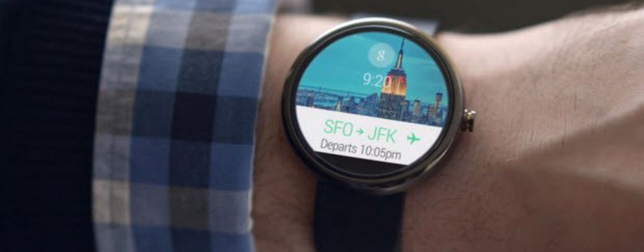Google’s Wear OS software may include a new feature later this year which may improve smartwatch performance.
Wear OS, formerly known as Android Wear, is in a tricky situation. While Google hopes the number of iPhone users buying smartwatches running Wear OS will continue to grow, the foundation on which these watches are built is starting to be antiquated.
Among the planned improvements could be the battery life-conserving display in these smartwatches. Most smartwatches keep the display turned off to conserve battery life until the wearer raises his wrist to look at the watch. But this gesture doesn’t always prompt the screen to turn on. Even watches possessing some type of constant display do not offer vivid setting of a normal display. People wearing traditional watches do not experience seeing a washed-out or blank display.
That will change when Qualcomm launches its new silicon this fall, said Pankaj Kedia, Qualcomm’s senior director of wearables.
According to Kedia, the new watches using Qualcomm’s forthcoming chipset will include a feature boosting even the “ambient mode” featured on some Google watches to enhance the display. The feature was especially wanted by some of the fashionable watchmakers that have depended on Qualcomm and Google, such as Fossil, Guess, Movado, and TAG Heuer.
“When you look at the watch today it’s very good when we’re interacting with it, but when you’re not, it’s not as good,” Kedia said in an interview with the web site Wareable. “You will see this new platform, this new architecture, significantly improve the look and feel of the watch whether you’re interacting with it or not.”
“It needs to look good when I’m looking at it or when I’m not looking at it,” he added. “It cannot be static when I’m not looking at it. It cannot be black and white when I’m not looking at it.”
When the new platform alongside a lead smartwatch is announced this fall, several partners will have Wear OS smartwatches with the new chipset on the market by this holiday.
The new chips by Qualcomm will also provide longer battery life, lightweight, leaner designs, and connections through LTE mobile networks, according to Kedia. Qualcomm, since the release of its Snapdragon Wear 2100 more than 2 years ago, hasn’t upgraded its smartwatch chipset.
While no smartwatch has been able to meet the sale expectations set by Wall Street a few years back, watches running Qualcomm and Google software have especially struggled. According to analysts sales of Apple’s watches are well below what they predicted in 2015, although the tech giant said its smartwatch sales is booming.
Apple is also expected to unveil an updated, fourth-generation smartwatch this fall, but details are known.












